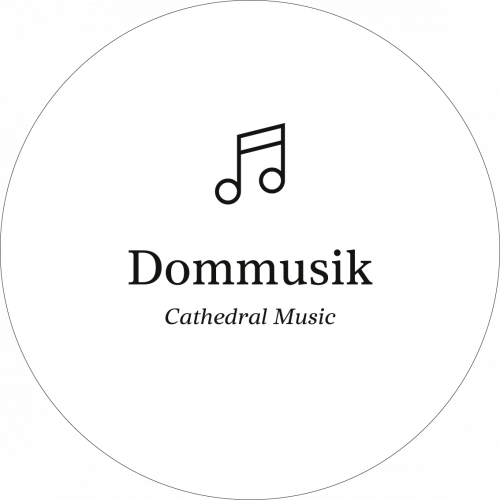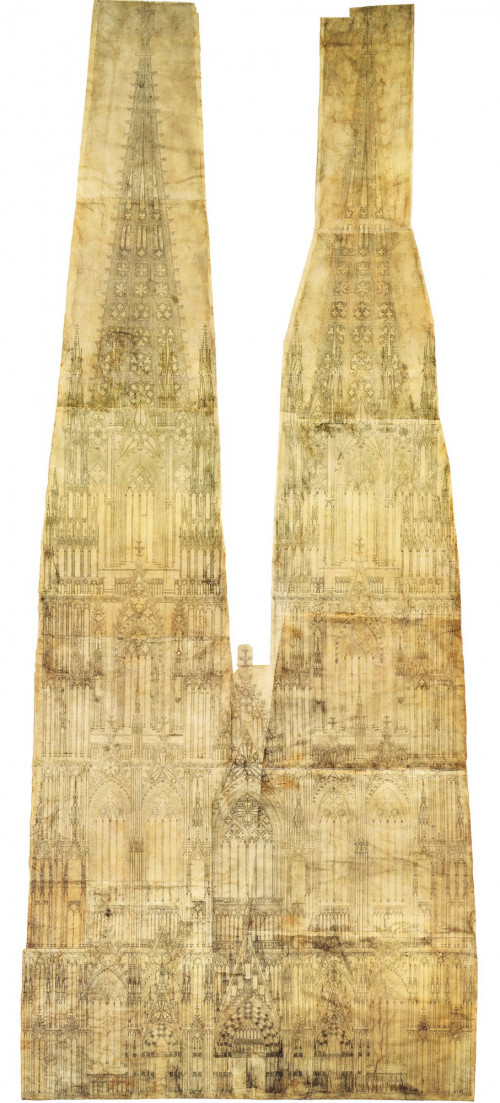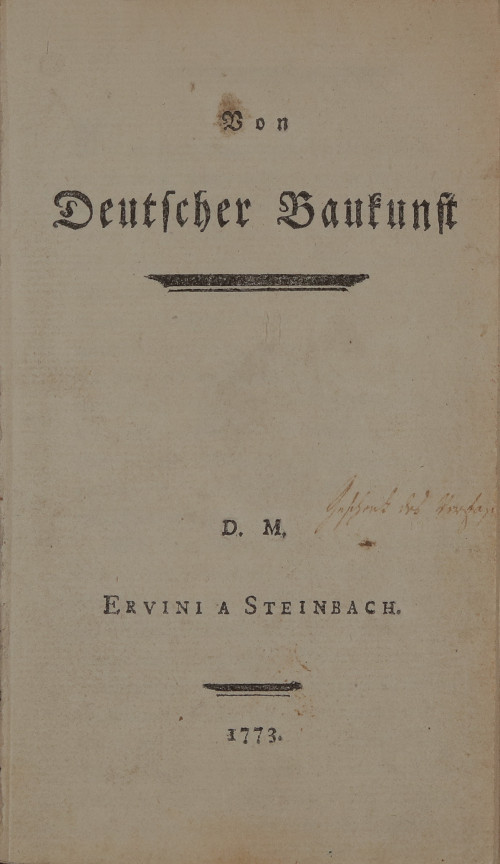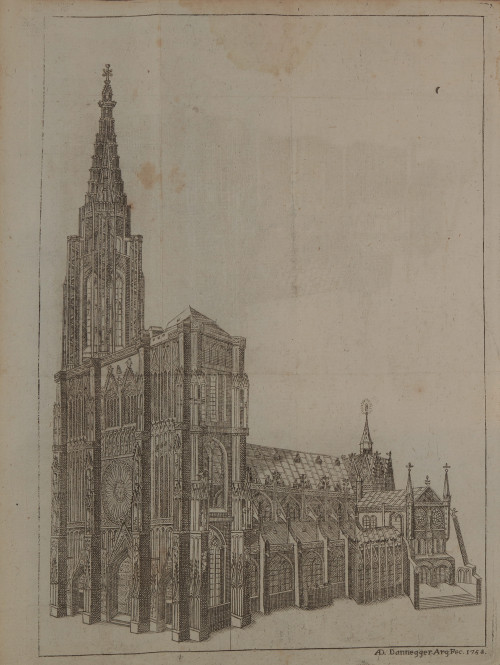The Cologne cathedral is today considered the city’s landmark. Many visitors are unaware that it was long missing its famous double-tower façade. The cathedral construction had begun in 1248 and come to a standstill around 1560, and it was not until the Romanticist era that people began talking about its completion. Only rather vague information had survived about the originally intended appearance of the absent west façade; the actual plans had been lost.
The merchant’s son Sulpiz Boisserée had been fascinated with the Middle Ages ever since attending Friedrich Schlegel’s Paris lectures in 1803. The Romantic theory of art had given him a new perspective on the Gothic style. In Cologne, he rescued medieval paintings from churches and abbeys closed down within the context of secularization, and campaigned for the preservation of the buildings. In the pursuit of his dream of completing the cathedral, he sought influential allies, among them Goethe. Boisserée sent Goethe initial plans in 1810. The famous writer visited him in Heidelberg in 1814 and was impressed with the Boisserée brothers’ extensive painting collection, which had meanwhile found a home there. And the journey had another surprise in store for Goethe as well: Boisserée had received word from court architect Georg Moller that a part of the original plan for the cathedral’s Gothic façade had turned up in an attic in Darmstadt. The two men travelled to Darmstadt to marvel at the view of the north tower. For Boisserée, a dream had come true.
In 1815, Moller and Boisserée found the second half of the façade plan in Paris: the view of the south tower and the middle section. The plan in its entirety measures some 4 by 1.7 metres. It consists of 20 sheets of parchment and was drawn in ink. The valuable original is now in safekeeping in the Cologne Cathedral Workshop.
Boisserée’s next step was to compile images of the cathedral in an extensive publication. He wrote the accompanying text — History and Description of the Cathedral of Cologne — himself. The splendid work sparked a lot of attention for the construction project. Goethe reviewed it in his magazine Ueber Kunst und Alterthum, where he also reprinted an older essay of his own on the Strasbourg Minster, describing his early encounter with a Gothic cathedral.
The completion of the Cologne Cathedral evolved into a national endeavour — it was to become a symbol of the unified German nation. The Prussian King Friedrich Wilhelm IV laid the cornerstone in 1842, and the project finally came to a successful conclusion in 1880.
Objects
-

FELIX MENDELSSOHN BARTHOLDY
Verleih uns Frieden gnädiglich, 1831
Stuttgart Chamber Choir, Director: Frieder Bernius. Carus 1999
-

SULPIZ BOISSERÉE
Histoire et description de la cathédrale de Cologne
Stuttgart: Cotta 1821
-

MICHAEL VON SAVOYEN
Plan of Cologne Cathedral’s facade (Riss F)
© Hohe Domkirche Köln, Dombauhütte. Foto: Matz und Schenk.
-

JOHANN WOLFGANG VON GOETHE
Von deutscher Baukunst. D(is) M(anibus) Ervini a Steinbach
Frankfurt a.M.: 1773
-

GEORG HEINRICH BEHR
Straßburger Münster- und Thurn-Büchlein; oder: Kurtzer Begrif Der merckwürdigsten Sachen, so im Münster und dasigem Thurn zu finden
Straßburg: Häußler 1765